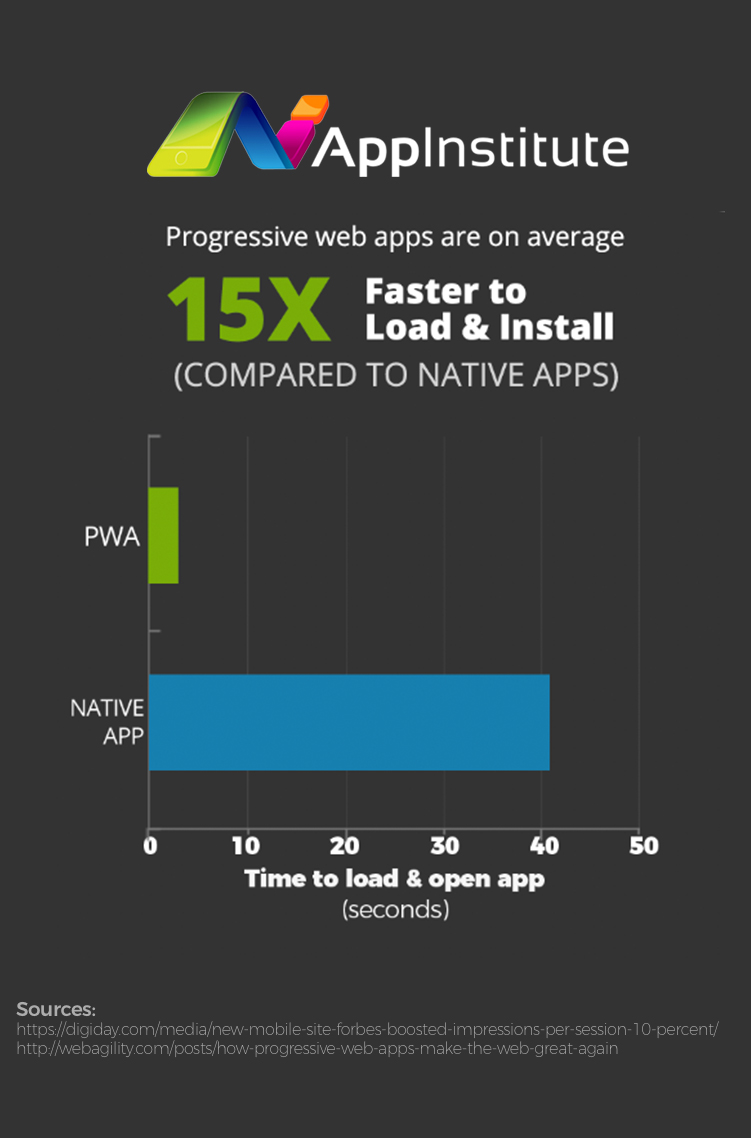
There are three truths about technology: over time, it becomes smaller, more powerful, and faster. The ways that we shop, read, watch, play and work have all changed to reflect that. Once upon a time, we used to use brochures and magazines to buy new products. We used to read books made from paper. Can you remember that?
Today, we want- need- information served in the time it takes to swipe left, right, up or down. Work and leisure are driven by data, a never-ending flow of data: brought to us through our TVs, desktops, laptops and mobile devices. Especially our mobile devices and if you’re not a part of it, you’re being left behind. To help you catch up, here’s a brief guide on the advantages of increasing consumer engagement through web apps.
The “old” way of doing things
Back in the day, websites used to take a long time to load. Anything as complex as Facebook is today actually wouldn’t have been viable back in the ‘90s and early ‘00s, since it would’ve taken five minutes to load. And if you wanted to download any file larger than a lo-res picture? Forget about it! But we coped, because we had to and because we were used to it. It was an accepted part of going online.
Over time, the internet became more complex. Internet speeds developed first with broadband, then with fibre optic. This allowed designers to create new, more responsive and interactive websites. And outside of desktop PCs and laptops, the never-ending rise of mobile allowed designers to design sites with smartphones in mind, and to create native apps which were even more responsive. In truth, web designers went a little crazy developing anything that looked great thinking it would be the sole factor that conversions rested upon.

Despite every advance though, mobile web browsing remains a frustrating and, at times, slow experience. Why? Because so many web developers still struggle to treat mobile browsers with the same importance as desktop browsers. The speed of looking something up online through your smartphone pales in comparison to using a native app, which leaves almost half of mobile users abandoning a website if it takes more than three seconds to load. But the promise of the progressive web app- the latest idea to speed up smartphone web browsing- could do away with all that. Let’s find out how.
The “New” way of doing things
Progressive Web Apps are the future of the internet… How often have you heard that? But seriously, they are the next step you can take to really chew into the relatively untapped smartphone browsing segment. They allow you to recreate the immediacy and responsiveness of a native app but in a smartphone browser.
Progressive Web Apps (PWAs) bring together the best features of web and mobile apps. They support offline functionality by storing data locally and loading quickly even on slow networks.
This immediacy enhances user satisfaction, as they encounter fewer delays compared to traditional web apps. Another advantage is the ability to deliver push notifications directly through the browser, which helps maintain user engagement.
Users enjoy an app-like experience without needing to download software from an app store, making PWAs a flexible choice for businesses looking to broaden their audience reach.
Without getting too heavy on the detail, Progressive Web Apps look exactly like native apps. They use what are called service workers to load even when there’s very little or no signal, and store data for later offline use. And, as we’re going to find out, they decrease bounce rate and increase conversions and time spent on site.
Advantages of Progressive Web Apps
Choosing between native apps and PWAs depends largely on a business’s goals and resources. Native apps offer extensive integration with device hardware, which can be necessary for some services.
However, they require maintenance across operating systems and often higher development costs. PWAs, on the other hand, are more cost-effective to build and maintain.
They offer broad compatibility as they run in a browser, ensuring accessibility across various devices. This versatility can be appealing for companies focusing on reaching users efficiently and cost-effectively.
Why adopt the new way of doing things?
Much like any trend in the world, sometimes they feel almost created for the purpose of a new trend. But there are so many benefits for developing a future with Progressive Web Apps to help decrease bounce rate and increase engagement for a mobile audience.
Because we’re using language like the future of the internet and you’re being left behind, we can see how PWAs might seem like just another trend. And without solid facts to back up why they’re actually useful, we would agree with you. But you don’t just have to take our word for it because there are loads of case studies out there. In particular, Google is pushing PWAs really hard, and they’ve amassed dozens of examples from across the web.
How a PWA can help your site: in numbers
The first PWA we’re going to look at is for a site called 5miles, an online marketplace where shoppers can buy and sell second-hand local goods. According to their analytics, before they implemented their new PWA, over half of new visitors found the site through a mobile browser. But because their site wasn’t optimised for mobile, they suffered from a high bounce and low retention rates, especially compared to their native app. So they sought to develop a new progressive web app to mitigate these issues, their PWA saw on average:
- 50% decrease in bounce rate. Customers found 5miles’ new PWA far easier and quicker to use, on comparable levels with their native app. Combine this with the reduction in friction the results will usually be positive in regards to decreasing the bounce rate.
- 30% increase in time spent on site. More time on site means more money spent, especially on a site like 5miles. This also points to far better engagement than they previously enjoyed. A usable fast experience makes people want to actually stick around, after all, no one likes standing around waiting.
- 100% new user growth rate, quarter-on-quarter. Needless to say, the decreased bounce rates and increased engagement mean one thing – a better user experience. But the technology behind PWA’s is incredibly frictionless, indexable, searchable, and linkable – which saw their user growth rate skyrocket. And their PWA was at the heart of that success.
Twitter Lite is a real-world example of how effective PWAs can be. After launching their PWA, Twitter reported a 65% increase in pages per session and a 75% rise in tweets sent.
This surge in interaction came along with a 70% reduction in data usage, proving how PWAs can enhance both engagement and performance. Similarly, Pinterest’s PWA led to a 60% increase in engagement and made their service more accessible by efficiently operating under poor network conditions.
What else does a PWA do?
5miles is far from the only example: Google showcase dozens! Most of them show that coding and implementing a PWA increases conversion rates two, even three times; one boasts a 12x increase in users on iOS and Android, another example saw their PWA increase engagement by 250%. Our next example, Flipkart can point to similar numbers: 3x more time spent on site, and a 40% higher re-engagement rate. But that’s not all.
- 3x lower data usage. 64% of Flipkart’s users accessed the site through 2G. So to encourage users to stick with the site, Flipkart streamlined it to dramatically reduce loading times for those in areas where the internet wasn’t the speed of fibre. A great thing to be noted about PWA’s is their accessibility even on slow connections.
- 70% better conversion for users who arrived via Add to Home screen. PWAs can be accessed just like a native app through the add to home screen function on Apple and Android phones. And Flipkart’s analytics showed that these customers were happy to spend too!
- 40% higher re-engagement rate. Users keep coming back to Flipkart. This can be attributed to the use of push notifications, but also the better user experience. Users will always return to something that doesn’t frustrate them and if it serves a value to that user.
Technical Aspects of Implementing PWAs
Implementing a Progressive Web App involves several technical components. Service workers play an essential role in enabling offline functionality and caching assets for quick access.
With a web app manifest, developers can define how the app appears to the user, like its icon on the home screen. Operating under HTTPS ensures data integrity and secure exchange, which are fundamental for modern applications.
These elements together enhance the reliability and security of the web app, making it a dependable choice for businesses seeking strong online solutions.
To learn more about the PWA features supported by AppInstitute, click here.

0 thoughts on “Information Is Best Served Fast: Increasing Engagement with Web Apps”